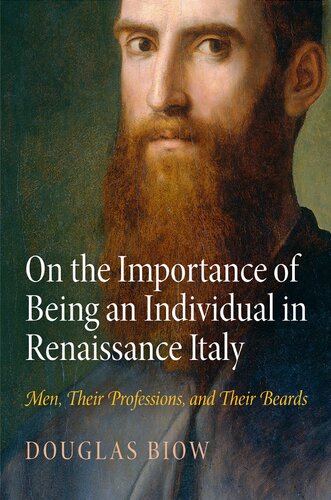

Most ebook files are in PDF format, so you can easily read them using various software such as Foxit Reader or directly on the Google Chrome browser.
Some ebook files are released by publishers in other formats such as .awz, .mobi, .epub, .fb2, etc. You may need to install specific software to read these formats on mobile/PC, such as Calibre.
Please read the tutorial at this link: https://ebookbell.com/faq
We offer FREE conversion to the popular formats you request; however, this may take some time. Therefore, right after payment, please email us, and we will try to provide the service as quickly as possible.
For some exceptional file formats or broken links (if any), please refrain from opening any disputes. Instead, email us first, and we will try to assist within a maximum of 6 hours.
EbookBell Team

0.0
0 reviewsIn recent decades, scholars have vigorously revised Jacob Burckhardt's notion that the free, untrammeled, and essentially modern Western individual emerged in Renaissance Italy. Douglas Biow does not deny the strong cultural and historical constraints that placed limits on identity formation in the early modern period. Still, as he contends in this witty, reflective, and generously illustrated book, the category of the individual was important and highly complex for a variety of men in this particular time and place, for both those who belonged to the elite and those who aspired to be part of it.
Biow explores the individual in light of early modern Italy's new patronage systems, educational programs, and work opportunities in the context of an increased investment in professionalization, the changing status of artisans and artists, and shifting attitudes about the ideology of work, fashion, and etiquette. He turns his attention to figures familiar (Benvenuto Cellini, Baldassare Castiglione, Niccolò Machiavelli, Jacopo Tintoretto, Giorgio Vasari) and somewhat less so (the surgeon-physician Leonardo Fioravanti, the metallurgist Vannoccio Biringuccio). One could excel as an individual, he demonstrates, by possessing an indefinable nescio quid, by acquiring, theorizing, and putting into practice a distinct body of professional knowledge, or by displaying the exclusively male adornment of impressively designed facial hair. Focusing on these and other matters, he reveals how we significantly impoverish our understanding of the past if we dismiss the notion of the individual from our narratives of the Italian and the broader European Renaissance.